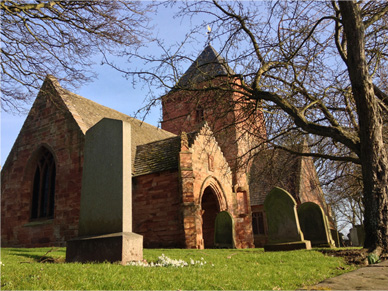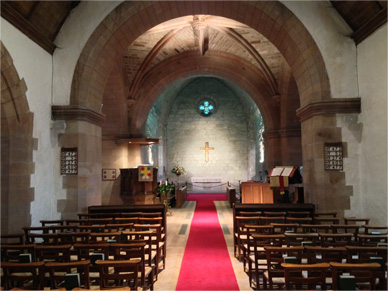
With its origins dating back to the 12th century, St Mary's Church is one of the best preserved small medieval churches in Scotland.
Much of the fabric of the existing church dates to a major reconstruction beginning in 1439, when Adam Hepburn of Hailes built the vaulted stone choir. The main layout and structure of the church has survived largely intact since then, although everything but the stone walls and vaulting were destroyed by fire in 1914, allegedly by suffragette protestors. Restoration of the church began in 1917, and today's interior is largely a result of that work, with the wagon roof, communion table, pulpit, lectern and font all by Scottish architect and furniture designer Sir Robert Lorimer.

Miracles and a Pope
From the 1300s, miracles were being reported by people drinking at the nearby well (reputedly dedicated to St Baldred), and Whitekirk quickly became a major centre for pilgrimage. By 1413, there were some fifteen thousand visitors to the village, and King James I placed the church under his protection, building hostels to shelter the growing number of pilgrims. Among them was the future Pope Pius II, who walked there barefoot through snow from Dunbar to give thanks for having been spared a shipwreck there in 1435.
The holy well
The exact location of the holy well, which is the reason for the existence of our church, is sadly no longer known, as it is said to have been filled in during the early 19th century. Efforts have been made to trace it, but as yet without success.








